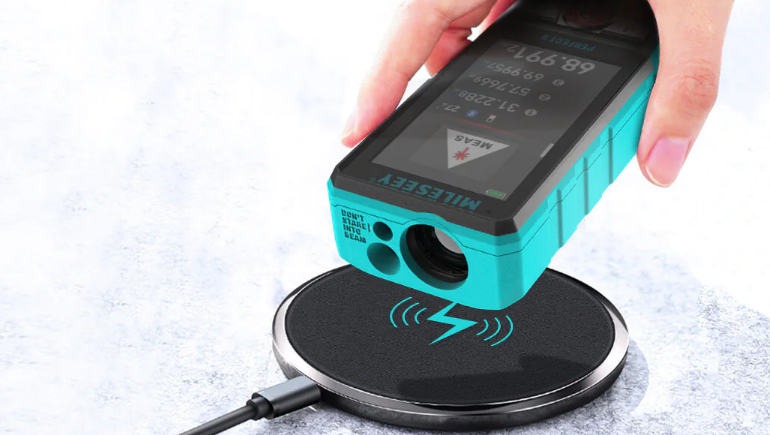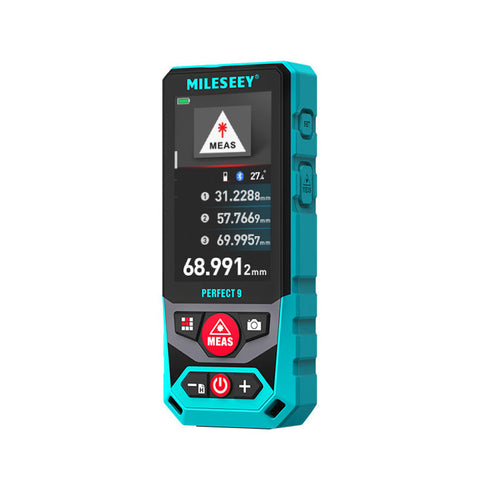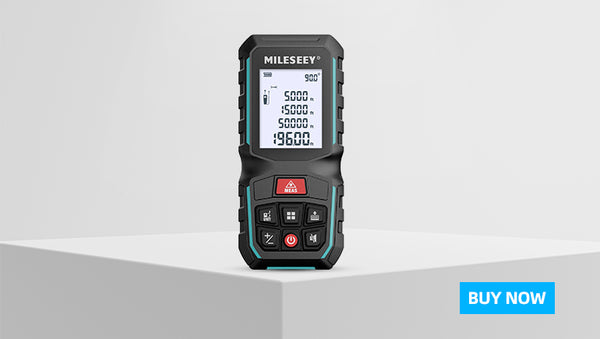While tools alone don't make an expert, it's undeniable that the right tools make any job easier. After all, if people took the time to invent better and more practical alternatives, there's no reason to stick to outdated versions. And that's precisely where laser distance meters come in when it comes to construction, renovation, and design.
Laser distance meters are able to take measurements with just the press of a button, are completely self-reliant, and are even able to take registers on their own. With all of that considered it's not hard to see why these handy devices are making waves across so many industries.
But what is a laser distance meter to begin with? Let’s dive deep into laser distance meters, how they work, and how they make measuring easier in this ultimate guide.
What is a laser distance meter?
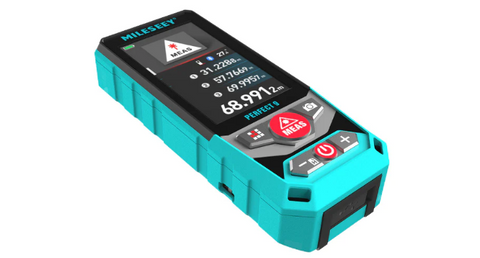
The first thing we need to cover is what exactly a laser distance meter even is. A laser distance meter is a construction and measurement tool that can measure distances through the use of a laser beam instead of the traditional measuring tape. Though some models do include both measuring methods for ease of use.
Benefits of using a laser distance meter
At their core, any meter will measure distances, so let's take a look at the specific benefits laser models offer and why they are seen as such an upgrade compared to traditional models.
1. Accuracy
Firstly, laser meters are far more accurate since all calculations are handled by a precise laser with no human input. In this setup, there's simply no room for human error. And that means you get the best possible readings.
2. Easy to Use
Laser meters are much faster to use, and in fact, their results might as well be instant. A laser distance meter works by shooting a beam of light at a surface and calculating the distance based on the travel speed of the light. These are values well below a second, so to our human eyes laser meters might as well be instantaneous.
3. Longer Range
Laser meters have a much longer range than standard tape measures. The fact is that a 20-meter tape would quite simply be unmanageable, but with a laser measure no matter what distance it is all you need is a button press.
Unlike the metal tapes of traditional measures, when you are using a laser device there's no risk of getting cut, so in many senses, they are far safer devices.
And of course, perhaps the most important perk to consider is just how easy they are to use. They are practically automatic, so you'll be having a much easier time on any project you undertake.
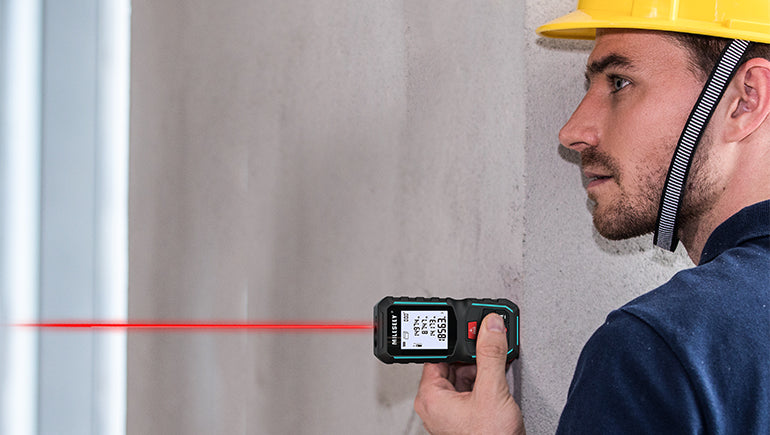
Applications of laser distance meter
Now that we know why laser meters are so popular let's take a closer look at where they are used, as to give you a better idea of when you can benefit from having a laser distance meter at hand.
Architects and contractors of course benefit the most from using laser meters, as these devices allow them to take fast and accurate measurements, saving them lots of time and ensuring their work is perfect. Similarly, insurance adjusters rely on these tools a lot as well, as they allow them to make visits shorter and get all required data with just a few button presses.
Generally speaking, any professional who builds surfaces will use a laser distance meter, and in that sense, anybody–from carpenters, architects, designers, flooring professionals, and beyond will get good mileage out of these devices. Even homeowners can make good use of a laser distance meter, as it'll be an invaluable tool on any DIY project, whether hanging a frame or making a new shed.
READ MORE: 4 Powerful Building Measurement Tools for You to Know
Which laser distance meter is right for you?
Now that you understand the appeal of laser distance meters, it's time to take a look at some models to see which one is just right for your needs. At Mileseey, we count on a wide variety of premium laser models and pathfinder solutions, so let's take a look at these models so you can see which one fits your style.
Mileseey P9
A full-color display, integrated Bluetooth capabilities, and an impressive range of up to 948 feet make the Mileseey P9 the definitive laser meter for people who live and work with measurements daily. With unmatched precision and access to a wide selection of apps, the P9 is perfect for professionals who need to take distant measurements, they can't quite reach on their own.
Mileseey G2
Compact yet functional, there's no better way to describe the Mileseey G2. Don't let its small size fool you, however, as this pocket-sized laser meter has every function you might need. Able to measure up to 196 feet and calculate angles with the simple press of a button, the G2 can help you make any calculation in a matter of seconds.
Mileseey M120
The Mileseey M120 is a portable and elegant solution that provides a wide suite of features in one of our most streamlined models. Easily rechargeable, able to measure up to 131 feet with unmatched precision, and with an extra large HD display this laser meter is perfect for enthusiasts that want an easy-to-learn model.
How to Use A Laser Distance Meter
Now let's get started on what you were waiting for, how to use laser meters, and how you can make sure you are getting the most out of your new Mileseey laser distance measure. They are very intuitive, but nonetheless, we'll be going over every last detail so nothing escapes your grasp.
Preparing your laser distance meter
Before you learn how to use a laser distance meter, you need to know what your specific model can do out of the box. So take some time to look over the specifications of your device and get acquainted with them.
Laser meters usually have multiple modes to assist the user with certain common calculations like area or volume measurement, so it's important to understand what you want to do with your laser. Do you just need to know the height of your ceiling to get the right drapes? Standard distance measurement will make do. Do you need to buy new tiles for your floor? Then you want to use the area measurement. And if you want a laser pointer some models even have a continuous beam mode just for that. So understanding each mode is the first step to mastering your meter.
Taking measurements
To get started with measurements what you need to do is to put your laser meter on one end of the distance you want to measure, with the beam pointing towards the other end. The device will calculate its own length as part of its calculation, so you can prop the laser flat against the wall without any worries.
Once the meter is properly set up you just need to press the measure button (usually a red MEAS button in our models), and you'll get an immediate reading of the distance. Your screen will then show you the exact number, in multiple units depending on your specific model, and at that point, you are set.
If you experience any irregularities with your measurement then give it another try just to make sure, sometimes the issue is temporary and fixes itself. If issues persist take into account the surfaces you are working with, as highly reflective surfaces can sometimes affect the beam of light in your laser meter. Last but not least consider turning it off and on again, these devices are ultimately small computers, and sometimes they too need a break.
Best Practices in Using Laser Distance Meter
While there's nothing inherently dangerous about a laser distance meter, they still are lasers, and as such certain precautions should be taken. Lasers should never be pointed at other people, especially at the face area, so make sure you are pointing away from yourself. If multiple people are working with you, you should wear protective glasses for prevention.
To ensure the most accurate result possible you want your meter to be as stable as possible, ideally prone on a flat surface, so keep in mind which are the best positions to measure from. And last but not least make sure to do external maintenance often, clean the case and especially the lens to make sure it all works as intended. But do not attempt to disassemble it, as laser components should only be handled by professionals.
Wrapping It Up
The fact is that laser distance meters completely change the way professionals and enthusiasts deal with measurements, and they are so convenient that it's hard to go back o traditional tapes after using them even once. So if you are looking to change your standard tape measure into a laser model you have everything you need right here, from the right models to buy to how best to use each of them based on your own needs.
Mileseey is one of the leading brands in the world of pathfinders and measurement tools, with 12 years of experience we have put to good use in developing accurate and affordable laser meters, laser levelers, and laser tape measures. When you buy Mileseey you are buying quality and experience, and become part of our commitment to offering the best possible tools to our clients.
Related Blogs from Mileseey
Meet Mileseey DP20 PRO in 2023: A Breakthrough in Bilateral Laser Distance Meter
Ultimate Guide to Construction Measuring Tools Every Engineer and Builder Needs
How to Maximize Your Warehouse Efficiency Distance Measurement Devices
Be the first to know the latest updates, tips, how-tos, exclusive deals, and discounts from Mileseey. Sign up for our newsletter today!

